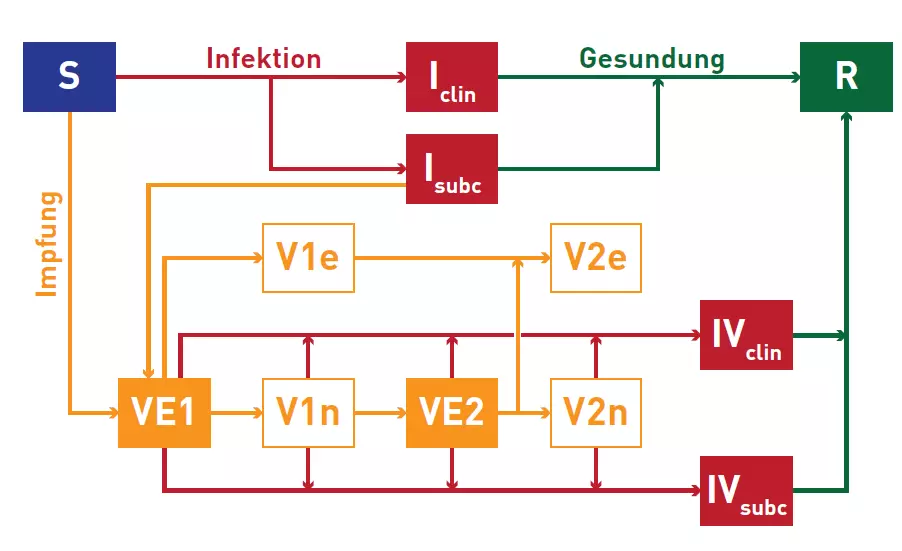Pandemics
Optimization of vaccination strategies in Switzerland

A study commissioned by the BAG, lead by the USYS – TdLab (ETH Zürich) and in collaboration with ACSS (ZHAW) and the Imperial College London.
(The study has been published under the title «Prioritätenliste und Kontingentberechnung – Pandemievorbereitung in der Schweiz» by Pius Krütli, Timo Smieszek, Rudolf Füchslin, and Patrik Eschle.)
Vaccination is a basic countermeasure against pandemics. Modern vaccination protocols require the administration of a number of doses in given time intervals. Assuming that vaccines are resource – limited (determined by a maximal number of doses provided per week), the question of optimal distribution arises. Scarcity of data and, even if data are available, only partial knowledge of numbers of infections makes it plausible to base the optimization on simulations and models.
Such an optimization faces a number question:
· What is the goal of the optimization? Not surprisingly, the optimal strategy depends on whether one aims at a minimization of casualties (lethal), the number of sick people or some other goal.
· What are the ethical foundations of the decision on optimality?
· What type of model is appropriate in a simulation study?
· What conclusions can be drawn from the simulation results?
Based on well – established approaches in epidemiology, we investigated the parameter space for the spread of influenza in Switzerland. The population has been divided in various subgroups (such as children, elderly persons, medical staff, etc) and, not surprisingly and in accordance with results obtained in other countries, our model suggests a particular prioritization, namely the prioritized vaccination of children.
This suggestion raises various questions. From an ethical perspective, the preferred vaccination of a specific subgroup of the population is, to say the least, problematic. We are convinced that besides providing data, models can support the resolution of ethical issues. This, because models enable the establishment of a connection between assumptions (such as a specific vaccination strategy) and outcomes by elucidating the underlying mechanisms leading to them. More concretely, in the case we analyzed, the suggestion of prioritizing children is not based on some value statement about children and, say, people above age 65. It is the recognition of the quantitative consequences of second round effects that guided us. Because of special aspects of their behavior, children (especially small ones) are “super spreaders” for influenza. It is then crucial to note that if one aims at protecting the elderly, one either can vaccinate them directly or one can try to reduce the probability that they get into contact with the virus in the first place. Our models indicate that vaccinating children has a strong impact on the dynamics of influenza. In fact, this impact is so strong that the expected numbers of casualties in all (large) subcategories of the population are reduced if children are vaccinated with high priority. Based on models, we argue that prioritization in vaccination can be justified by the consideration of dynamic second round effects and need by no means to be rooted in value statements.